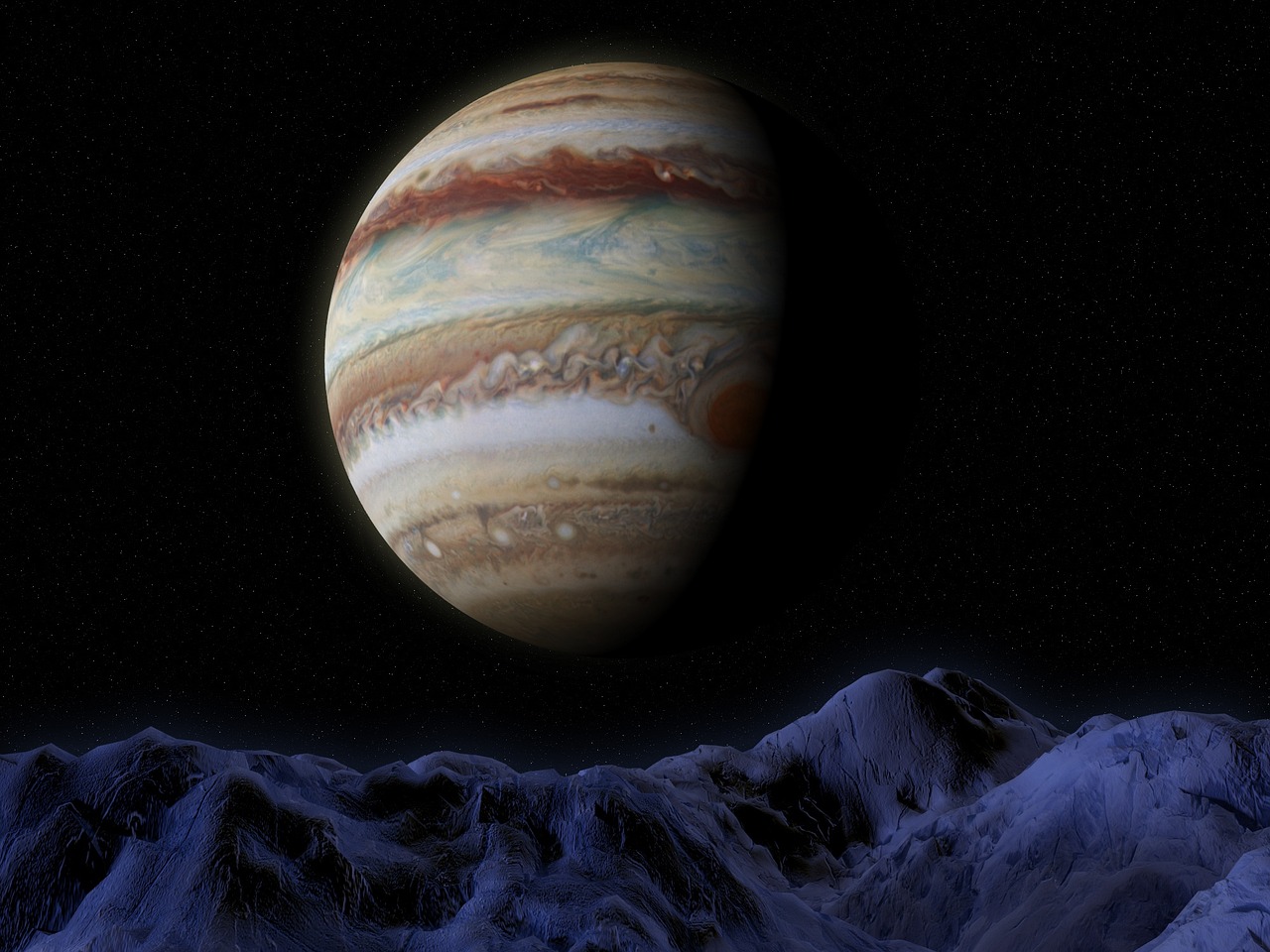Media release
From:
Icy moon Europa may produce less oxygen than thought
The total production of oxygen at the surface of Jupiter’s icy moon Europa may be less than previously assumed, a paper published in Nature Astronomy suggests. The findings have implications for the potential habitability of Europa’s ocean.
Jupiter’s moon Europa hosts an internal liquid ocean with potentially habitable conditions below a frozen crust. The moon’s surface is constantly bombarded by radiation that breaks the icy crust into oxygen and hydrogen, most of which are freed from the surface, escaping into space, or remain behind to form Europa’s atmosphere. The abundance of these atmospheric gases and ions — and consequently their production rate at the surface — has mostly been inferred by remote sensing observations and has large uncertainties.
Jamey Szalay and colleagues analysed data from a flyby of Europa performed by the Juno spacecraft on 29 September 2022, which saw the spacecraft fly 353 km above Europa’s surface. Using the Jovian Auroral Distribution Experiment (JADE) located on Juno, the authors extracted the abundance of various pickup ions, which are charged particles generated by the breakup of atmospheric neutrals when they collide with energetic radiation or other particles. From this data, they calculate that approximately 12 kilograms of oxygen are produced at Europa’s surface every second. This is at the lower end of the expectations inferred from previous models that ranged from 5 to 1,100 kilograms per second.
The authors suggest that their results indicate there may be less oxygen on Europa’s surface than previously thought, and that this implies a narrower range to support habitability in Europa’s ocean.



 International
International


